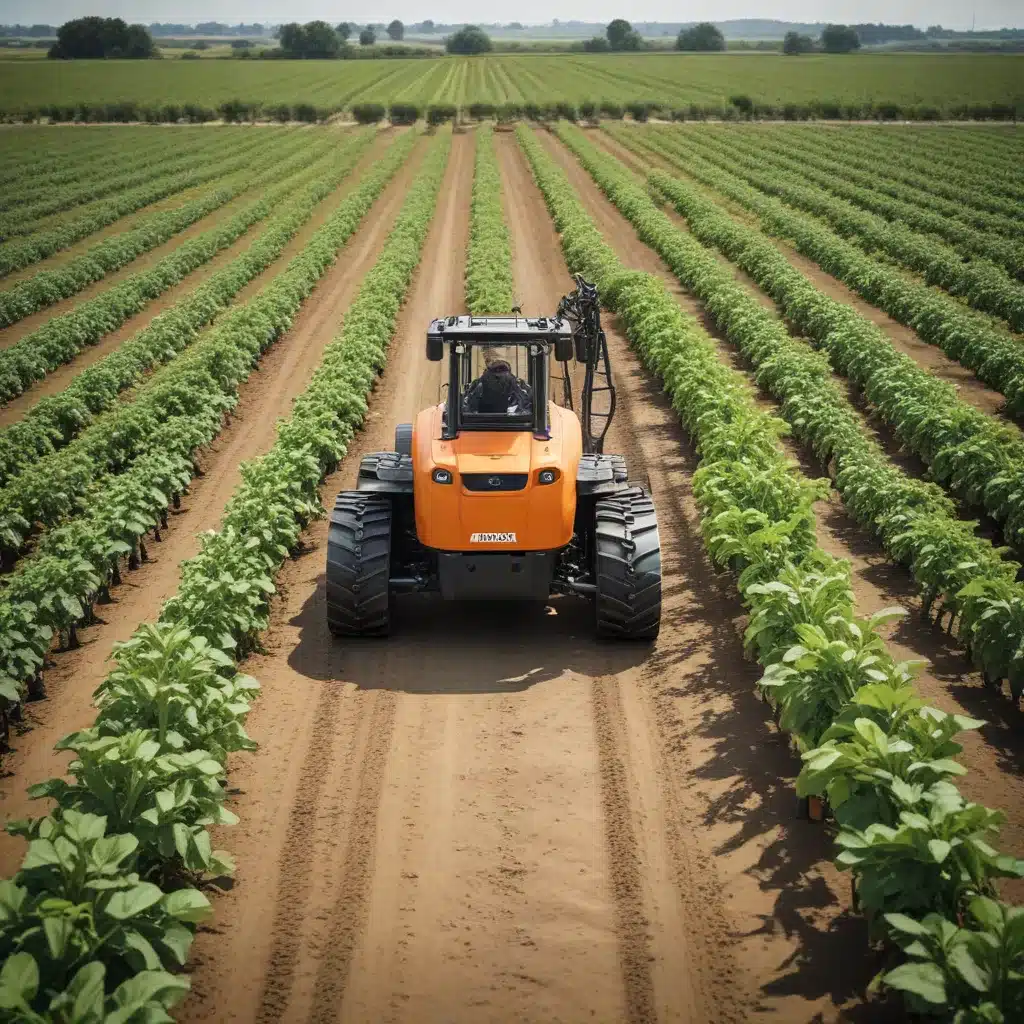
The Rise of Agricultural Robotics
The agricultural industry is undergoing a remarkable transformation, thanks to the integration of advanced robotics. As the world faces growing demands for food production, coupled with labor shortages and the need for sustainable farming practices, automation has emerged as a game-changing solution. At the forefront of this revolution are forklift-based robots, which are revolutionizing the way agricultural products are handled, stored, and transported.
Forklift automation in agriculture offers a multitude of benefits that are redefining the industry. These autonomous vehicles, equipped with cutting-edge sensors, navigation systems, and sophisticated software, have the ability to perform a wide range of tasks with unparalleled efficiency and precision. From precision planting and targeted spraying to seamless product retrieval and efficient warehouse operations, forklift robots are reshaping the landscape of modern agriculture.
Precision Farming with Forklift Automation
One of the key advantages of forklift automation in agriculture is its ability to enhance precision farming practices. These robotic systems can navigate through fields and orchards with remarkable accuracy, ensuring optimal seed placement, targeted fertilizer application, and precise product harvesting. By leveraging GPS, machine vision, and real-time data analysis, forklift robots can make informed decisions that maximize crop yields and resource utilization.
Take the example of a forklift-based robot navigating a sprawling cornfield. Equipped with advanced sensors and algorithms, the robot can precisely identify the optimal planting spots, deposit seeds at the perfect depth and spacing, and monitor the growth of the crop throughout the season. This level of precision not only improves overall yield but also reduces wastage of valuable resources such as seeds, water, and fertilizers.
Optimizing Warehouse Operations
Beyond the field, forklift automation is also revolutionizing the way agricultural products are handled and stored in warehouses. These autonomous vehicles can seamlessly navigate through complex warehouse layouts, efficiently transporting and storing goods with unparalleled accuracy. By integrating with warehouse management systems, forklift robots can track inventory, optimize storage, and streamline the logistics of product distribution.
One of the most significant advantages of forklift automation in agricultural warehouses is the ability to reduce labor costs. These robots can operate around the clock without the need for breaks or shift changes, ensuring continuous productivity. Moreover, they eliminate the risk of human error, improving overall warehouse efficiency and order accuracy.
Enhancing Safety and Sustainability
Forklift automation in agriculture also contributes to improved safety and sustainability. By removing the human operator from the equation, these robotic systems eliminate the risk of accidents and injuries associated with manual forklift operations. Additionally, the precise control and optimization of resources achieved through forklift automation lead to reduced waste, lower carbon footprints, and more sustainable farming practices.
For example, in an orchard setting, forklift robots can carefully navigate the terrain, avoiding damage to delicate trees and ensuring the gentle harvesting of fruits. This not only protects the crop but also preserves the overall health of the orchard, contributing to its long-term sustainability.
The Future of Forklift Automation in Agriculture
As the agricultural industry continues to evolve, the role of forklift automation is poised to become even more crucial. With ongoing advancements in artificial intelligence, machine learning, and sensor technology, these robotic systems are becoming increasingly sophisticated, adaptable, and responsive to the unique challenges faced by modern farmers.
The potential of forklift automation in agriculture extends far beyond the current applications. Envision a future where these autonomous vehicles seamlessly integrate with other robotic systems, such as drones and autonomous tractors, to create a comprehensive and interconnected precision farming ecosystem. This level of integration would enable real-time data sharing, collaborative decision-making, and the optimization of every aspect of the agricultural process.
Conclusion
The integration of forklift automation in agriculture is a transformative force that is redefining the way we approach food production. By enhancing precision, efficiency, safety, and sustainability, these robotic systems are not only addressing the immediate challenges faced by the industry but also paving the way for a more sustainable and prosperous agricultural future.
As the world continues to grapple with the increasing demands on food production, the role of forklift automation in agriculture becomes increasingly crucial. By harnessing the power of robotics and automation, farmers and agricultural professionals can unlock new levels of productivity, profitability, and environmental stewardship, setting the stage for a more resilient and thriving agricultural landscape.
To learn more about the latest advancements in forklift automation and how it can benefit your agricultural operations, visit Forklift Reviews – your trusted source for industry insights and practical solutions.
Key Benefits of Forklift Automation in Agriculture
-
Precision Farming: Forklift robots equipped with advanced sensors and navigation systems can precisely plant, fertilize, and harvest crops, optimizing resource utilization and maximizing yields.
-
Improved Efficiency: Autonomous forklift systems can operate 24/7 without breaks, increasing productivity and streamlining warehouse operations.
-
Enhanced Safety: Forklift automation eliminates the risk of human error and injuries, creating a safer working environment.
-
Sustainability: Precise resource management and reduced waste contribute to more environmentally friendly farming practices.
-
Cost Savings: Automation reduces labor costs and operational expenses, improving the overall profitability of agricultural operations.
Transforming the Agricultural Landscape
The integration of forklift automation in agriculture is a remarkable testament to the power of innovation and technology. By harnessing the capabilities of these robotic systems, farmers and agricultural professionals can unlock new levels of efficiency, precision, and sustainability, paving the way for a more resilient and prosperous future for the industry.
As the world’s population continues to grow, the need for innovative solutions in agriculture has never been more pressing. Forklift automation stands at the forefront of this revolution, offering a glimpse into the transformative potential of robotics and automation in the realm of food production.
To stay informed about the latest developments in forklift automation and other agricultural technologies, be sure to visit Forklift Reviews – your comprehensive resource for industry insights and practical guidance.

